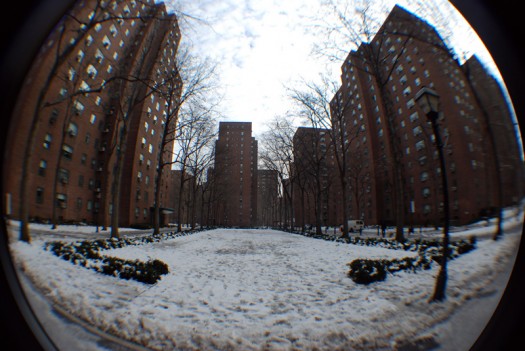
We are celebrating 15 years — and counting — of stories that are deeply researched and deeply felt, that build a historical record of what the city has been.
We are celebrating 15 years — and counting — of stories that are deeply researched and deeply felt, that build a historical record of what the city has been.

Stuyvesant Town/Peter Cooper Village by Flickr user Carly Hoskins
This week brought news that Tishman Speyer and BlackRock Realty are handing over Stuyvesant Town/Peter Cooper Village to creditors to avoid bankruptcy. The Wall Street Journal lists the estimated value of the properties at $1.8 billion, just three and a half years after the $5.4 billion deal to purchase the site in 2006, and lists a few of the investors facing losses, ranging from the California Public Employee’s Retirement System to the Church of England. The New York Times explains why this is “a big black eye…but it’s not the end for Tishman” and investigates what this all means for the tenants. And the Post takes a look at who is thinking about buying the property now.
In waterfront news, $8.9 million in grants is being awarded by New York’s Department of State to waterfront revitalization projects in New York City. The Waterfront Alliance summarizes what projects will receiving funding — including the installation of MWA Eco-Docks, the implementation of the Bronx’s Shoelace Park Master Plan, Brooklyn Navy Yard improvements, climate change education programs, $1.5 million for the Randall’s Island Living Shoreline, two Jamaica Bay projects, and a seed farm and tree nursery at Freshkills — and points out that the announcement is also noteworthy for demonstrating “a major commitment to urban waterfront access” by the State. Check out the complete list with more details on MWA’s Waterwire.
The Make a Difference in Two Days lovers out there will appreciate this DIY intervention in Astoria that helps pedestrians cross a filthy pool of water that has submerged a heavily-trafficked sidewalk. An artist who goes by “Posterchild” constructed the “Astoria Scum River Bridge” out of an old work bench found on a curb as a gift to the neighborhood and was recently awarded a commendation from the office of Councilman Peter F. Vallone, Jr. (which came with a promise to help get the leaking pipe fixed).
Downtown Brooklyn residents: plan ahead. In 2019 your stretch of the BQE will be closing for a complete reconstruction. While it’s a bit early to start planning alternate routes, this announcement gives us occasion to think about the challenges of tackling significant infrastructure reconstruction projects in the middle of densely populated and highly-traveled neighborhoods. Streetsblog attended the stakeholder advisory council meeting for the project where the discussion often focused on how to balance neighborhood quality of life with the need to address the existing hazardous roadway conditions.
Outside of New York, high-speed rail is the hot transportation topic of the week now that details have been released about where the $8 billion of stimulus money allotted for HSR is headed. Much of the money is going to California, Florida and Illinois, with the Northeast receiving just $485 million to upgrade 7 major corridors in the region. The Infrastructurist points us to a post by Robert Puentes at the Brookings Institute that explains why prioritizing the Tampa-Orlando route makes sense and how this program is “nothing short of a sea change for how Washington thinks about infrastructure investments.” Meanwhile Wired digests it all in their feature about the history and future of “superfast bullet trains” in the U.S.
Finally we send you off into the weekend with a little toe-tapping video we’re calling “Me and Julio Down by the PS1 Pavilion” (aka SO-IL’s winning entry for the 2010 MoMA/P.S.1 Young Architects Program):
(Side note: Also on SO-IL’s Vimeo page you can see two quick clips of their installations for the League’s 2007 Beaux Arts Ball, Smoke and Mirrors.)
The Roundup keeps you up to date with topics we’ve featured and other things we think are worth knowing about.
The views expressed here are those of the authors only and do not reflect the position of The Architectural League of New York.